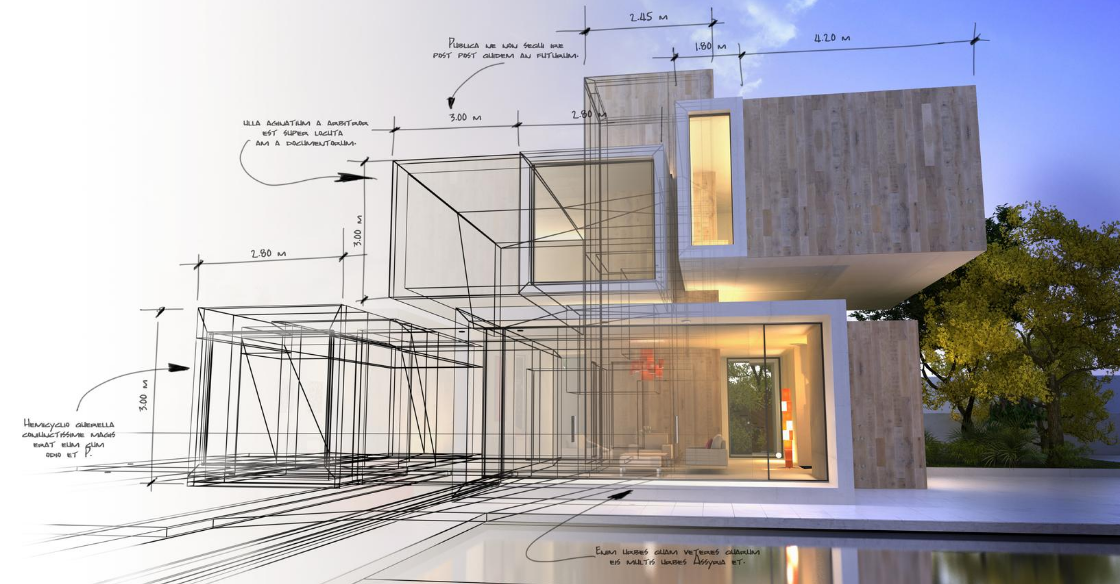Leading Reasons to Choose CDA Architects for Your Residential or Commercial Layouts
Leading Reasons to Choose CDA Architects for Your Residential or Commercial Layouts
Blog Article
An Extensive Overview of Building Styles and Their Influence on Modern City Preparation and Advancement
Building styles have actually long served as a mirror to the social values and technical developments of their time, playing an important function in forming contemporary city preparation and advancement. From the magnificence of Neoclassicism to the utilitarian technique of Brutalism, each design has actually introduced special principles that affect city looks and functionality.
Historic Introduction of Building Styles

As societies transitioned through the Middle Ages, Gothic style emerged, defined by its verticality and detailed outlining, matching the spiritual goals of the era. The Renaissance marked a resurgence of timeless perfects, combining art and design in innovative manner ins which influenced subsequent styles across Europe.

Today, architectural styles remain to evolve, driven by globalization and sustainability issues, showing a vibrant interplay in between heritage and advancement. This historic overview underscores the relevance of design as a mirror of social evolution and as a catalyst for urban growth.
Key Architectural Styles Explained
The diversity of architectural designs shows the myriad influences that shape our built setting, each personifying unique qualities and social values. Secret architectural designs consist of Classic, Gothic, Baroque, Innovation, and Postmodernism, each standing for distinct historic contexts and visual viewpoints.
Timeless style, rooted in ancient Greece and Rome, highlights proportion, proportion, and using columns (cda architects). In contrast, Gothic style, thriving in the Middle Ages, is defined by sharp arches, ribbed vaults, and flying buttresses, developing an aerial top quality in basilicas. Baroque style, emerging in the 17th century, is marked by splendour, intricate embellishment, and a vibrant interaction of light and darkness
Modernism, which gained momentum in the early 20th century, prioritizes feature over type, utilizing new materials like steel and glass to create minimalist structures. Postmodernism, reacting versus the austerity of Modernism, welcomes eclecticism and historic referral, often integrating spirited components and paradox.

Impact on Urban Preparation
Fit the growth of cities, architectural designs dramatically influence urban preparation choices. The selection of building design frequently determines the appearances, functionality, and overall character right here of urban settings. Modernism, with its emphasis on minimalism and functionality, motivates open rooms and the integration of technology, shaping city layouts that prioritize performance and access. Alternatively, typical designs might stress historic conservation, resulting in urban designs that maintain social heritage and promote pedestrian-friendly settings.
Furthermore, architectural styles can impact zoning policies and land make use of plans. Urban coordinators have to think about the dominating architectural patterns when making areas, ensuring that new developments harmonize with existing structures. This factor to consider fosters natural metropolitan landscapes and improves community identification.
The execution of specific architectural styles can likewise affect click here for info socioeconomic variables within a city. For instance, high-end contemporary styles may attract upscale locals and services, resulting in gentrification, while much more cost effective housing solutions may focus on sensible and lasting designs to suit varied populaces. Eventually, the interaction in between architectural designs and metropolitan planning creates vibrant cities that reflect both historic context and contemporary demands, forming the lived experiences of their inhabitants
Sustainability and Modern Design
Building designs play a critical function in attending to contemporary challenges, specifically in the world of sustainability. As urban locations broaden and ecological worries increase, modern design increasingly accepts lasting design concepts that prioritize energy efficiency, resource preservation, and marginal eco-friendly effect.
Contemporary building movements, such as biophilic layout and environment-friendly style, advocate for structures that integrate with their environments, making use of natural products and advertising biodiversity. These designs commonly integrate renewable resource sources, such as photovoltaic panels and wind turbines, to reduce reliance on fossil fuels and reduced carbon footprints.
Additionally, the integration of advanced technologies, such as smart building systems, improves power monitoring, maximizing resource use while making certain occupant comfort. Cutting-edge water monitoring techniques, consisting of rain harvesting and greywater recycling, more add to lasting metropolitan settings.
Significantly, sustainability prolongs past environmental worries; it incorporates social and financial dimensions. By cultivating area wellness and promoting inclusivity, modern building styles align with sustainable development objectives. Consequently, the advancement of architectural practices remains to shape resistant cities that not just fulfill the requirements of the existing but likewise secure the future for generations to find.
Area Involvement in Design
Community engagement in design works Read Full Report as an essential bridge in between engineers and the populaces they serve, making certain that the constructed environment shows the requirements and aspirations of its individuals. This collaborative process welcomes area members to contribute their insights and preferences, promoting a feeling of possession and duty towards the rooms they populate.
Reliable area engagement utilizes numerous techniques, such as workshops, surveys, and public discussion forums, to gather varied viewpoints. These techniques assist in a two-way discussion, enabling designers to comprehend local contexts while equipping citizens to articulate their problems and desires. This inclusivity not just improves the layout high quality yet likewise promotes social equity by addressing the special challenges faced by marginalized groups.
Furthermore, community engagement can result in innovative solutions that may not arise in a traditional style process. By incorporating regional knowledge and cultural values, architects can produce areas that reverberate more deeply with customers, boosting use and sustainability. Eventually, prioritizing community interaction in layout procedures causes settings that support social interactions, assistance wellness, and enhance neighborhood connections, thus playing an essential duty fit modern metropolitan landscapes.
Verdict
Building designs have exceptionally influenced contemporary city preparation and growth, showing evolving cultural and technological contexts. As cities continue to expand and adapt, the recurring dialogue in between building heritage and modern-day layout principles will stay vital in producing inclusive, dynamic spaces that enhance top quality of life and promote social equity.
Report this page